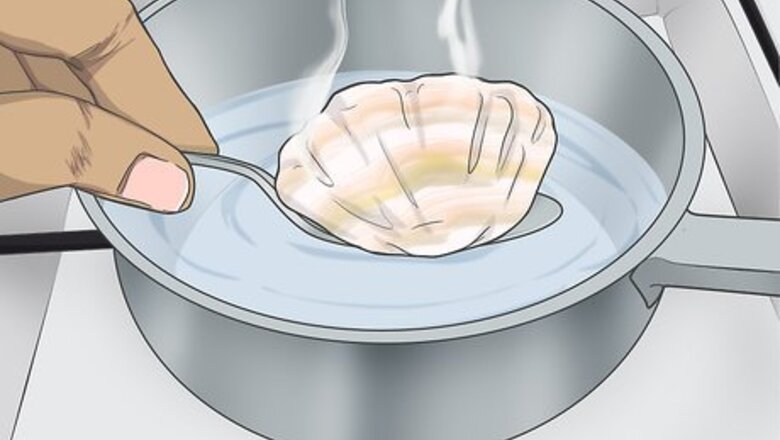
views
- Clean the shell if you picked it up off the beach and mark where you’ll be drilling the hole, sanitizing it with boiling water if needed.
- Use a thumbtack or scissors to make the hole and gently twist; keep reinserting the thumbtack or scissors to widen the hole as needed.
- Clear the hole by blowing away dust in-between re-insertions and again when you’re done creating it.
Using a Thumbtack on Small Shells
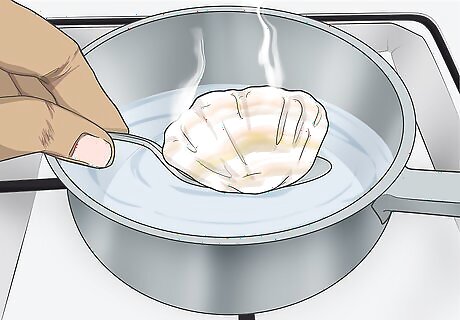
Clean the shell if you picked it up off the beach. If you got your shell from the beach, it might carry germs and bacteria that you’ll want to get rid of before you start drilling. Set a small pot of water on the stove and bring it to a boil. Place the shell in the water and let it boil for 5-6 minutes to kill off any bacteria. Then, turn off the stove, lift the shell out with a spoon, and let it cool on the counter for 5-10 minutes. If you bought the shell at a store, you don’t have to boil it. You can also soak your shells in soapy water with a little bit of vinegar.
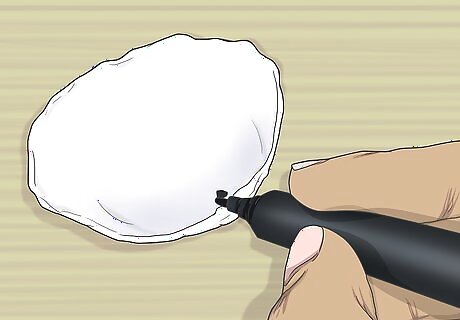
Lay the shell down with the inside facing up and mark the hole location. When you’re ready to start drilling, place the shell down on a flat surface with its inside (the concave curve of the shell) facing up. Decide where on the shell you want to make your hole, then use a pencil to mark it with a small dot. The location choose typically depends on what you’ll be using the shell for. Shells used for jewelry or wind chimes, for example, are often strung near the top or base, but you may also choose to drill through the middle depending on your design. The shell may be thicker near the base than it is at the top. This might make it harder to drill through, but will also lessen your chances of cracking the shell. You may want to place down a few layers of newspaper or an old placemat, as you might push through and puncture the surface under the shell.
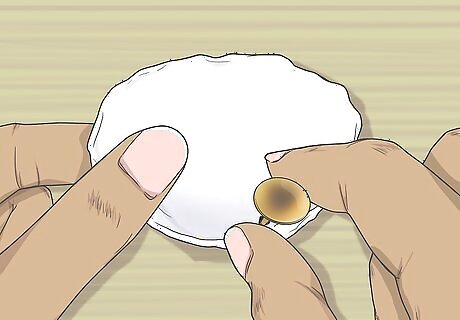
Push a thumbtack into the hole and gently twist. Exert a gentle but firm downward pressure as you twist the point of your thumbtack into the shell. Hold the shell firmly with your other hand to keep it still. Continue twisting and pressing down until you hear a slight pop and the thumbtack pushes through the other side. Thumbtacks are a good choice for smaller shells because they’re sharp, but not so powerful that they’ll break through the shell and crack it. You can also use a needle to make your hole.
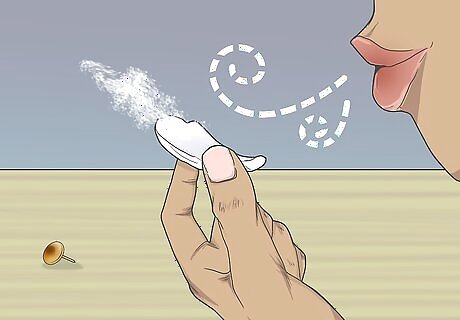
Remove the tack and blow away any dust to clear the hole. Pull out the thumbtack gently, twisting it slightly if it’s sticking, then blow on it lightly to clean it. If the shell is very dusty, you can also rinse it in some water.
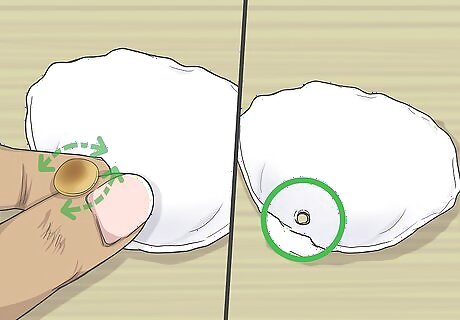
Reinsert the thumbtack and continue twisting if you want the hole to be bigger. The hole you make with the thumbtack will be quite small, good for thin string or a jump ring if you’re making jewelry. If you’re using a thicker string or chain, insert your thumbtack again and twist it more forcefully to make the hole bigger. You can also drill a second hole right next to the first one for a wider opening.
Drilling with Scissors for Thick Shells
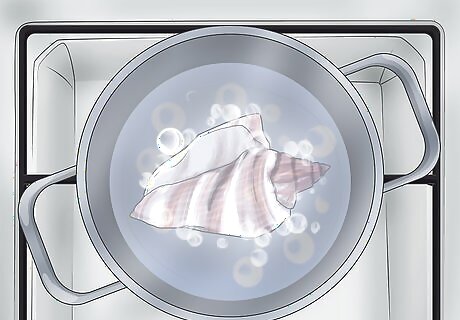
Sanitize the shell with boiling water if you found it outside. If you picked up your shell at the beach, cleaning it before you start crafting with it will protect you from any germs or bacteria that might be lingering. To do this, boil a small pot of water on the stove and drop the shell in the boiling water. Let it sit for 5-6 minutes, then turn off the heat and remove it with a spoon. Let the shell cool for 5-10 minutes before you start to drill. If you purchased your shell from a store or online, you don’t need to boil it.
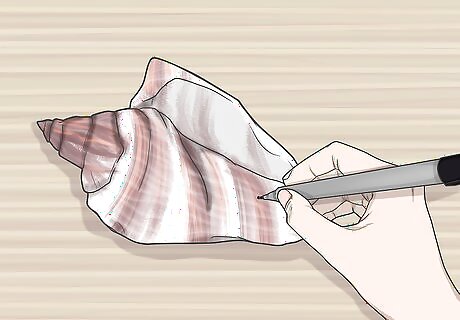
Set the shell down on its flattest side and mark the hole location. Set the shell down on a flat surface. Place it on whatever side feels the most stable to avoid cracking it when you start to drill. Then, decide where on the shell you want to make the hole and use a pencil to mark it with a light dot. If you want your shell to hang down naturally, like on a chain for jewelry, place the hole near the top or base of the shell. If your design calls for the shell to be suspended in the middle, place the mark in the middle of the shell. Place a few layers of newspaper or an old placemat under the shell to protect the surface you’re drilling on.
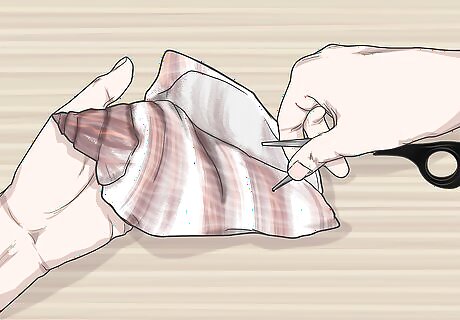
Twist the sharp point of your scissors into the mark. Open a pair of scissors and place one tip against the hole. Hold the shell firmly with your other hand and slowly twist the scissors down in to the shell, pressing down gently but firmly. You may need to hold the scissors by the other blade instead of the by the handle. If this is the case, wear a thick glove to protect your hand. The size of the scissors will determine the size of the hole. If you want a smaller hole, use a thinner pair of scissors, or even nail scissors. For a larger hole, go with regular scissors.
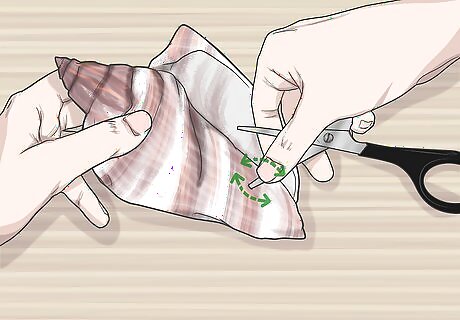
Continue twisting until the hole goes all the way through. Twist the scissors blade around and continue pressing down until you break through to the other side. Draw back the scissors slowly and carefully and set them aside. Don’t continue pushing down once you break through; the blade widens quickly and the hole might crack.

Clear the hole by blowing away any dust. Gently blow on the hole to rid it of any dust you may have created. This will let you get a good look at the hole to make sure it’s the right size and in the correct location. You can also rinse the shell under water to clean it.
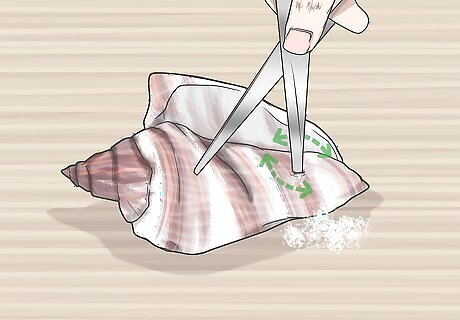
Repeat the process if you want the hole to be larger. If you need the hole to be bigger, insert your scissors again. Push them through a little farther and twist again, focusing on widening the hole. Measure the hole against the string, chain, or jump ring you plan on threading through. Make sure it’s wide enough before you put away your scissors.




















Comments
0 comment